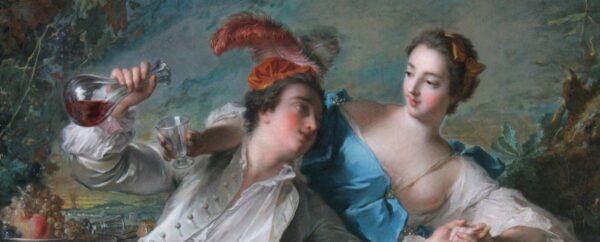
“Casanova’s Europe” reveals a refined and visually seductive culture on the cusp of modernity—one characterized by pleasure seeking, movement across boundaries, and self-invention. Casanova himself inhabited many roles—entrepreneur, social climber, spy, author, and translator of the Iliad. But he was also a cheat and a libertine.
So read the online tease for an MFA’s exhibition a few years ago on “Casanova’s Europe; Art, Pleasure, and Power in the 18th Century. “ I’ve long been a fan of the Venetian’s multi-volume memoirs (he was Armenian by birth, providing, as it does, an unparalleled look into the everyday lives of eighteenth century people. Yes, there’s plenty of pleasure-seeking and self-invention going on, but one cannot help but be impressed I’ve also been impressedhe amount and variety of wine consumed in its pages. And so, one afternoon a few years ago, I utilized the Gutenberg Project site to search every reference to wine in all 12 volumes of Giacomo Casanova’s Story of My Life.
I learned that of the wines he and his friends tasted many are still familiar, namely: Refosco, Moscatel, Muscat, Champagne (heaps of this), red and white Burgundy including Chambertin (“Truly Chambertin and Roquefort are excellent things to restore an old love and to ripen a young one.”), Bordeaux, Malaga, Tokay, Rhine (or Rhenish), Alicante, Cape (South Africa), La Mancha, Montepulciano, Montefiascone, Languedoc (as Beziers), Orvieto, Hermitage, Gatta, (likely Gattinara), and Aleatico (as Oleatico).
Other varieties cited still exist, but are scarcely the stylish sips they used to be. Among these: Madeira, Malmsey, Cyprus, Sillery (a kind of Champagne, though perhaps still rather than sparkling), Ratafia (a wine-based cordial), Canary (Canary Islands), and Samos and Cephalonia (from islands in the Aegean and Ionian seas, respectively). Still other wines seem permanently consigned to oblivion. No one today has any idea what Cerigo, Scopolo, or Generoydes were or tasted like.
Gem-quality anecdotes and memorable quips are thick upon the ground in these volumes – the occasional sound admonition, too. For example, who today, beset by claims of vintners that their wines are natural, organic, biodynamic, more pristine than Adam and Eve before the Fall, could fail to be tickled by this indignant outburst:
You stupid fellow,” I exclaimed, “how can you ever be certain of the purity of a wine unless you have made it yourself?”
This week in the wine corner . . .
THURSDAY JULY 26 3-6 PM – TO RESTORE AN OLD LOVE
2016 Dom. des Cognettes, Muscadet Sèvre-et-Maine Sur Lie “Sélection des Cognettes,” $14.95
2017 Château des Sarrins, Rosé “Grand Cuvée,” $21.95
2015 Chante Cigale l’Apostrophe IGT Mediteranée, $14.94
FRIDAY JULY 27 3-6PM – TO RIPEN A YOUNG ONE
2017 Negro & Figli, Roero Arneis Non Filtrato Vino Bianco, $19.95
2017 Fabien Jouves “A Table!!!,” Vin de France Rosé, $22.95
2017 Paterna “il Rosso” IGT Rosso di Toscana, $21.95
-Stephen Meuse